Disability, Humility and the Self: Some Humanistic Perspectives
By John Banja, PhD
This essay offers some perspectives on the nature of disability onset over the course of human life—a prospect that most regard with hesitation and fear even though anyone who lives a long life will almost certainly experience some form of disability. I will use a number of humanistic texts to inform the discussion, including ones from an ancient poet, a contemporary playwright, a Buddhist psychotherapist, and a former “jet set” writer and editor. My hope is to shed some light on American mores and sensibilities especially pertinent to our understanding and construction of a “self”; discuss whether these social constructs offer a realistic picture of human life and human needs; and comment on the extent to which they foster or erode a national willingness to assist and support persons with disability.
The Americanized construction of the “self” is easily discerned in the media and is the product of nearly 400 years of cultural evolution. In contrast to more “communitarian” societies where a national sense of solidarity is grounded in citizens reflecting a deep and abiding sense of shared history and customs, the evolution of American government, law, and cultural beliefs valorizes an autonomous, self-reliant, individually accountable self. 1 For example, consider the famous 1960 court decision in Natanson v. Kline which states that “Anglo-American law starts with the premise of thorough-going self-determination. It follows that each man is considered to be master of his own body.”2 While the context of this ruling concerns a health professional’s obligation to inform patients of intervention risks, it nicely captures the national sentiment of what it means to be a citizen enjoying “bodily space” in the United States, i.e., to be the “owner” of a body that he or she controls and is master of.
The ethos of this atomistic, self-reliant individual demands privacy, freedom, and an absence of physical, ideological, or economic interference such that individuals can live according to their personal dictates and aspirations.3,4 Of course, the onset of a serious disability makes a mockery of this hyper-individualism. While technology may help restore some modest loss of hearing, vision or ambulation, a serious stroke or spinal cord injury will require massive amounts of human assistance to enable survival and functional recovery. The onset of a significant disability presents an irritating counterpoint to the robust self-reliance enshrined in the American notion of self. Certainly, the new self that emerges from the aftermath of injury will demand a carefully orchestrated constellation of others unimaginable by the former self.5
[pl_blockquote]Confronted with such an assault on one’s identity, how do we re-imagine ourselves after disability strips our previous perceptions of who we are, and what gives our lives meaning? What happens on a more personal, “philosophical” level as individuals gain better understanding and appreciation of their cognitive and motor functioning changes over the life span? How do life’s calamities as well as ecstatic moments affect our awareness of what we may provide to one another, especially as we age? These questions invite the important lessons of the humanities, as their most significant contribution may be to transport us from the confines of our subjective world experience into the experiences and wisdom of others.6[/pl_blockquote]
Steven Pinker, the prolific Harvard scholar whose work has straddled the neurosciences and the humanities, has recently opined that empathy, sympathy, and moral equality began to affect Western cultural mores and practices when significant percentages of European populations learned how to read.7
[pl_blockquote]The humanities expand and alter our imaginations; they refine our moral feelings for one another; and they give us exquisitely fine-grained accounts of the moral challenges humans face within the (otherwise unfamiliar) contexts of others’ experiences. Furthermore and throughout history, the humanities have exerted an occasionally subversive force that can undo a society’s entrenched beliefs about the world and its workings.8[/pl_blockquote]
This essay’s primary objective is to discuss certain assumptions and attitudes towards our functional natures that are admittedly false but which some of us, possibly even most of us, cling to tenaciously and lovingly. I will start with one that is close to many of us, namely our “self-love,” and explore with the help of the Roman poet Ovid not only a malignant form of that self-love but the way our narcissistically based vulnerabilities can augment the suffering that disability inevitably brings with it.
The Story of Narcissus and its Implications for Disability Onset
“Don’t fall in love with yourself. Look what happened to Narcissus.” And in a nutshell, that’s right. Anyone who knows the story knows that Narcissus stumbles across his reflection in a pool; he is mesmerized by it and can’t tear himself away. His intoxication with himself is so pathological that he dies on that very spot of ground. But the story of Narcissus in Ovid’s epic poem The Metamorphoses is much more complex, sad, and a masterpiece of psychological insight.9
When Narcissus first gazes into the pool, he is unaware that he is looking at himself: “enraptured Beauty caught his eyes that trapped him…Enchanted by the charms which were his own.” 9 (p. 77) He believes he’s looking at someone who lives in the pool but when he tries to reach into the pool and embrace the figure, it decomposes and disappears. By exploiting the literary device of a reflection in a pool, Ovid brilliantly gives us Narcissus’s fundamental problem: His “image” resides only “on the surface” and therefore lacks any substance, depth and cohesiveness. Whenever Narcissus tries to embrace and caress it, it shatters into fragments and nothingness: “What he had tried to hold resided nowhere, For had he turned away, it fell to nothing: His love was cursed.” 9 (p.77) And although the image is immensely seductive and flirtatious—whenever Narcissus gazes at it longingly, his rapturous glance is returned in kind—it persistently refuses to satisfy him: “O lovely boy, why do you glide from me, Where do you vanish when I come to meet you?”9 (p. 78)
When Narcissus realizes that he’s enamored with his own reflection, he is overcome with sadness and despair, perhaps because he recognizes, “deep down,” the shallowness of his feelings for others and his subsequent inability to provide the love he craves to himself: “O darling boy whose love was my undoing.” 9 (p. 79) And with this realization, we reach the potentially “therapeutic” or salvific moment of the story: Had Narcissus, upon realizing that his beauty and self-love would not fulfill his longings, absorbed and accepted that disappointment and began rethinking and reworking his self-understanding and his relational life, he would have survived. Had he sought greater wisdom about love, caring and the human interdependencies that make life possible and bearable, he might have struck out on a path of self-reconstruction and self-redemption. Instead, his toxic intoxication with himself immobilized him and, in the end, fatally disabled him. He refused to move from the spot of his reflection in the pool, so stubborn and calcified was his idealization of what he saw and so meagre were his psychological resources to recover from it.
What are the lessons of this story for disability? One lesson consists in Narcissus’s momentous failure to realize the very abbreviated extent to which self-reliant, self-gratification provides ultimate satisfaction. Psychologists and psychiatrists in the 20th century who studied the phenomenon of pathological narcissism explain that persons like Narcissus search for a “love object” that not only gives them pleasure but that solidifies, gratifies, and inflates their sense of self.11 Very likely, their self-esteem is fragile and needs shoring up. Perhaps they feel insecure or anxious about their lovability and compensate by “merging”—as Narcissus tried by embracing his image in the pool—with something they find magnificent, sweeping, and powerful –something they believe will protect them when life’s frustrations and disappointments come calling. I believe that the lesson of Narcissus is the one that we infer from the story: That in refusing to accept and return the love of others and in insisting on idealizing and “objectifying” an object—in Narcissus’s case, his physical beauty—we profoundly miscalculate the limited extent and reach of our self-reliance, and we blind ourselves to the real sources of joy and meaning in life. Likewise, we might be so impressed by our functional ability—or just take it for granted—that we never seriously contemplate its loss until the dreaded moment occurs. Small wonder that the onset of a disability is something for which, as families, communities, and as a society, we are often entirely unprepared.
Narcissus mirrors the chronic anxiety of people who are preoccupied with their physical appearance and functional decline. Not surprisingly, they tend to regard serious disability onset as something “devastating” which either shouldn’t happen in the course of life or for which the individual is somehow to blame, e.g., “He must have done something to deserve this or bring it on.”12 That we insist on maintaining a culture that refuses to recognize our temporary able-bodiedness—a recognition that would presumably inspire better access to medical care and equipment, assisted living, job creation, etc., for persons with disability—is the downside of a society that refuses to countenance the biological reality of life’s course, opting instead to join Narcissus in a doomed quest for everlasting function and beauty. Of course, pursuing beauty isn’t the only way one can try to guard against life’s assaults and threats. Some people opt for accumulating wealth or property, or they pursue sensual gratification or excitement, or they dismiss (or rationalize) the suffering of others to the point where that reality seems nonexistent, i.e., “out of sight, out of mind.”13 Again, the strategy involves a dogged reliance on the belief that hard work, imagination, risk-taking and perseverance can acquire the very thing that will protect him or her from life’s adversities. The humanities give us an extremely compelling portrait of such an attempt in the character of Professor Vivian Bearing, the protagonist of Margaret Edson’s play, Wit.
Wit
The basic outline of Margaret Edson’s Pulitzer prize winning play, Wit, is very familiar: An emotionally cold, controlling, and overly demanding individual has an epiphany about human life as she succumbs to a very nasty terminal illness.14 Dr. Vivian Bearing is a 50 year-old English professor who has achieved an enviable reputation for her scholarship on the metaphysical poetry of one of England’s greatest but most daunting poets, John Donne. Like Narcissus, Bearing has no friends or significant others or, indeed, any significant life attachments other than with her self-defining work (as occurs among so many professionals, especially academics).
Bearing’s self-construction shares a remarkable similarity with Narcissus’s: Just as Narcissus tries to merge with something he thinks will bring him everlasting satisfaction and happiness, so Bearing devotes herself to illuminating a forbidding body of scholarly work that she believes will supply the same. Their motives are strikingly similar: The quest to engage and appropriate a superspecial something, a hyperreality that, so they believe, will not just protect them from life’s disappointments, frustrations and threats but that makes them awesome. By becoming one of the world’s experts on the sonnets of John Donne, Bearing believes she will have all the resources necessary to navigate the turbulence of life’s more difficult moments—which she apparently does until she develops an aggressive ovarian cancer and, as a last resort, consents to participate in a high-dose/high toxicity chemotherapy drug trial. Through her suffering and “bearing” of it all—and suffering, of course, is one of the great humanistic tropes leading to wisdom—Vivian comes to realize how her hermetic, self-reliant, scholarly life precluded the human contacts and experiences that give joy and meaning to life.
In an extraordinarily moving scene near the play’s end, Vivian is visited by her idol and inspiration, the forbidding Professor E.M. Ashford, who mentored Vivian’s initial study of Donne. Now retired, Ashford tiptoes into Vivian’s room, removes her shoes, slides into bed alongside her, puts her arm around her and asks Vivian if she would like her to recite some Donne. Near death, Vivian emits an anguished “Nooooo….” whereupon Ashford pulls out a children’s book she has purchased for her grandson, Margaret Wise Brown’s 1942 story The Runaway Bunny. 15
Whereas the model of “wisdom” throughout the play is the majestic, sweeping verses of Donne’s sonnets, at the end of her life, Vivian listens to:
Once there was a little bunny who wanted to run away. So he said to his mother, “I am running away.”
“If you run away,” said his mother, “I will run after you. For you are my little bunny.”
“If you run after me,” said the little bunny, “I will become a fish in a trout stream and I will swim away from you.”
“If you become a fish in a trout stream,” said his mother, “I will become a fisherman and I will fish for you.”15
As Ashford quickly observes, The Runaway Bunny is an allegory of the soul: we can never remain hidden from the forces of life. As much as Narcissus and Vivian Bearing work on cultivating a self that is above life’s fray, reality will always find us. But as exemplified by Momma Bunny, help may be available. With Momma Bunny’s ending line of “have a carrot” to Runaway Bunny, the ultimate lesson seems to be that our only option is to accept our situation.
Sadly, Vivian Bearing pays a high price to achieve that wisdom of the soul. I will end this essay by arguing for if not a different self-construction than the one relying on individualism and self-reliance, then one that at least admits a quality that people like Narcissus and Vivian Bearing have little of: humility. I will discuss it through the writings of Buddhist scholars and use Jean-Dominique Bauby’s description of his experience of (locked-in) disability as a remarkable example.
Humility: The Buddha and the Butterfly
Obviously, Narcissus’s and Vivian Bearing’s aloofness and vanity render them anything but humble people. But their humility is lacking in another respect that I have been belaboring all along: Their stubborn refusal to face up to life’s insidious assaults. In his book, thoughts without a thinker, psychiatrist Mark Epstein makes the Buddhist point that:
[pl_blockquote][T]he greatest source of human anxiety is the experience of nonperfection. Only through the recognition of perfection as a fantasy can such insecurity be overcome…The wish for security or perfection…is one of the most compelling unconscious wishes that we harbor. It is this wish that, in the Buddhist view, drives us to see self and other as fixed, immobile, and permanent objects that can be possessed or controlled and that in some way contain a piece of that original security.16 (p.86)[/pl_blockquote]
Whether it be Narcissus gazing at his reflection in the pool or Professor Bearing offering yet another brilliant interpretation of a passage from Donne, the individual mistakes the ravishing power of the moment as a source of eternal glory and devotes his or her life to appropriating the unattainable fantasy. Epstein writes that recognizing the futility of this effort is the height of wisdom attainment as the individual grasps the reality principle: “to recognize the frustration inherent in the insatiable pursuit of release or satiety, which most of us seek not just for gratification but also for an offsetting of our insecurity or uncertainty.” 16 (p.61) Indeed, absorbing that understanding is the way to humility.
In his 1997 autobiographical narrative The Diving Bell and the Butterfly, Jean-Dominique Bauby describes his experience of the most physically disabling of neurological injuries, the locked-in state.17 The book, of course, has become an international bestseller and Bauby’s story, at least in the following respects, reflects an extraordinary humility that the Buddha might well approve.
First, rather than despair over his misfortune, especially as he is only 43 years old and lived a jet setting life, Bauby seems much more curious than piteous about his situation. Throughout the book, his storytelling perspective resembles a news reporter’s relating events he finds fascinating or provocative. For example, he is bemused by the fact that he is the former editor-in-chief of Elle magazine—the European equivalent of America’s Vogue—yet he now has immense difficulty forming his tongue to articulate an “L” for his speech therapist: “A pitiful admission for an editor in chief who cannot even pronounce the name of his own magazine!”17 (p. 40)
Second is the style of the writing, which mirrors Bauby’s consciousness and sense of self: The narrative is not that of sustained meditation on glorious things or of a paradise lost, but reads like a continuous flow of images, impressions, observations, memories, fleeting thoughts, and the like. Bauby’s writing mimics contemporary characterizations of consciousness—i.e., not like an object but rather like a process.18 Bauby’s “self” flows along like a stream of experiences rather than as something whose contents have been calcified into the kind of object Narcissus sought but could not grasp.
Third, the subtitle of the book is “A Memoir of Life in Death.” While some may take this to imply that Bauby’s locked-in state is a kind of living death, I suggest we understand his “death” as that of his previous self. Towards the end of the book, Bauby claims “I have indeed begun a new life,” 17 (p. 129) which we might take to mean he has begun a new self, one that is conveyed by the buoyancy, lightness, and irony of his “butterfly” prose.
A fourth aspect of Bauby’s adjustment to his disability is his remarkably creative spirit. Disability or no, his creative juices are undaunted as he imagines writing a play about his circumstances, many of which he finds absurd and laughable.
A fifth factor in Bauby’s response to his disability is his incredible patience with discomfort. Perhaps he is one of the few who, somewhat like Vivian Bearing but unlike Narcissus, can tolerate a great deal of suffering and find a way to fold it into a story:
This morning, with first light barely bathing Room 199, evil spirits descended on my world. For half an hour, the alarm on the machine that regulates my feeding tube has been beeping out into the void. I cannot imagine anything so inane or nerve racking as this piercing beep beep beep pecking away at my brain. As a bonus, my sweat has unglued the tape that keeps my right eyelid closed, and the stuck-together lashes are tickling my pupil unbearably. And to crown it all, the end of my urinary catheter has become detached and I am drenched.17, p.57
Interestingly, and following the Buddha’s first noble truth that life is suffering, Bauby makes no inference or draws no particular lesson from the event save that he ends the story with the nurse turning on his TV and his seeing an ad asking “Were you born lucky?” His stroke has happened, and now he is different. His past life, marked by exciting travel and a never-ending stream of beautiful women each vying for his attention and affection, is over. He dwells in the now. And if he could, I’m confident he’d greet talk about self-reliance, autonomy, and independence with peals of laughter.
Each of these factors smack of a humble person: the accuracy of his self-perception; the acceptance of his lot; the reluctance to compare himself (favorably or not) with others; the refusal to view his r situation as tragic; and an empathic perspective Bauby often assumes in perceiving his circumstances as an outsider or onlooker might.18 Indeed, in one of the few passages in the book where he expresses intense psychological suffering and despair, Bauby’s sadness is largely provoked by his physical inability to express his love for his son, Theophile:
His face not two feet from mine, my son Theophile sits patiently waiting—and I, his father, have lost the simple right to ruffle his bristly hair, clasp his downy neck, hug his small, lithe, warm body tight against me. There are no words to express it. My condition is monstrous, iniquitous, revolting, horrible. Suddenly I can take no more. Tears well and my throat emits a hoarse rattle that startles Theophile 17 (p. 71)
Even here, Bauby’s feelings of sadness are as much evoked by his feeling his son’s loss as feeling his own.
Conclusion
I end this essay by arguing that the primary cause of the Western un-ease in the face of disability is a cultural cowardice that Epstein described as the “fear at experiencing ourselves directly.”16 (p.17) Because such a direct experience of our human selves would reveal a self that is marked by impermanence, unpredictability, and ultimately dissolution and death, so many persons direct their libidinal energies to the unbridled pursuit of beauty, wealth, pleasure and other self-focused aims. The reality of life’s entropic course is too painful for them to contemplate and disability onset is one of its most upsetting realities.
In their unnerving and sometimes subversive way, however, the humanities remind us of the reality principle and the universal aspect of disability onset. The insecurities of a Narcissus or Vivian Bearing drive maladaptive strategies that ultimately fail. Until we recognize the universality of that failure and come to understand disability as a natural and inevitable moment in life’s course, we will likely not evolve rational public policies that effectively and compassionately address our shared fates. My hope is that we can replace a stubborn insistence on self-reliance and the atomistic self with a more humble but also more realistic view of the human life trajectory and its countless interdependencies. A mature understanding of disability onset is clearly one of the lessons the humanities offer us, and we would be a wiser nation to use those lessons to inform the future development of our health, welfare, and civil rights policies.
References
- Lasch C. The Culture of Narcissism: American Life in an Age of Diminishing Expectations. New York: Norton; 1991.
- Natanson v. Kline 354 P.2d 670 (1960).
- Gergen KJ. The Saturated Self: Dilemmas of Identity in Contemporary Life. New York: Basic Books; 1991.
- Bellah RN, Madsen R, Sullivan W, Swidler A, Tipton S. Habits of the Heart: Individuals and Commitment in American Life. University of California Press; 2007.
- Banja J. Stroke rehabilitation and the phenomenological reconstitution of the self. Topics in Stroke Rehabilitation. 2011;18(1):24-29.
- Brody H. Stories of Sickness. NY, NY: Oxford University Press; 2003.
- Pinker S. The Better Angels of Our Nature: Why Violence Has Declined. London, U.K.: Allen Lane; 2011.
- Fleischacker S. A Short History of Distributive Justice. Cambridge, Mass: Harvard University Press; 2004.
- The Metamorphoses. Gregory H (trans.). New York: The Viking Press; 1958.
- Weiner E. The Geography of Bliss: One Grump’s Search for the Happiest Places in the World. New York: Twelve; 2009.
- Kernberg O. An ego psychology object relations theory of the structure and treatment of pathologic narcissism: an overview. Psychiatric Clinics of North America. 1989;12(3):723-729.
- Scott C. Belief in a just world: a case study in public health ethics. Hastings Center Report. 2008;38(1):16-19.
- Millon T. Disorders of Personality: DSM-IV and Beyond. New York: John Wiley & Sons, Inc.; 1996, 393-427.
- Edson M. Wit: A Play. New York: Faber and Faber; 1999.
- Brown MW. The Runaway Bunny. New York: Harper Festival (Board Book edition); 1991.
- Epstein M. Thoughts Without a Thinker: Psychotherapy from a Buddhist Perspective. New York: Basic Books; 1995.
- Bauby J-D. The Diving Bell and the Butterfly. Leggatt J (trans.). New York: Vintage International; 1997.


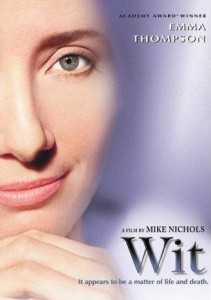
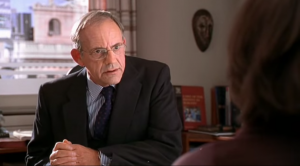
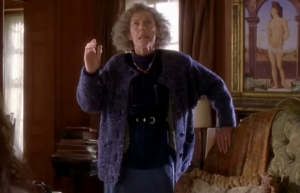
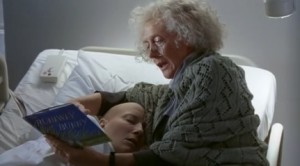

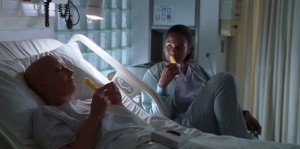
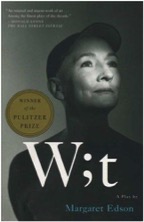


 Member since 2019 | JM14274
Member since 2019 | JM14274


NO COMMENT